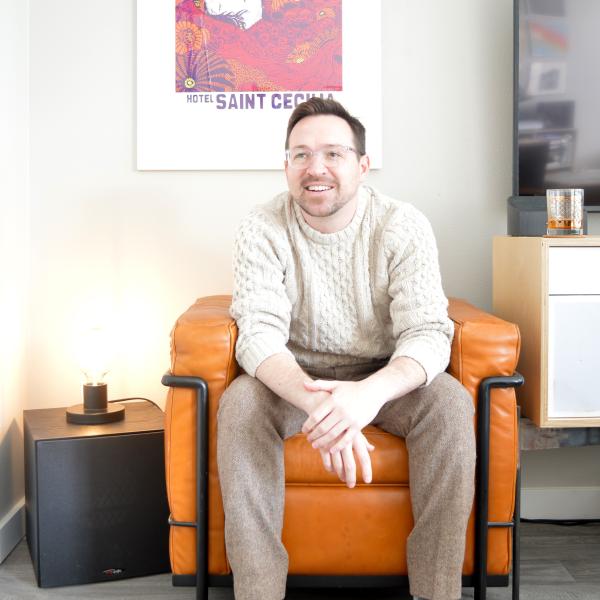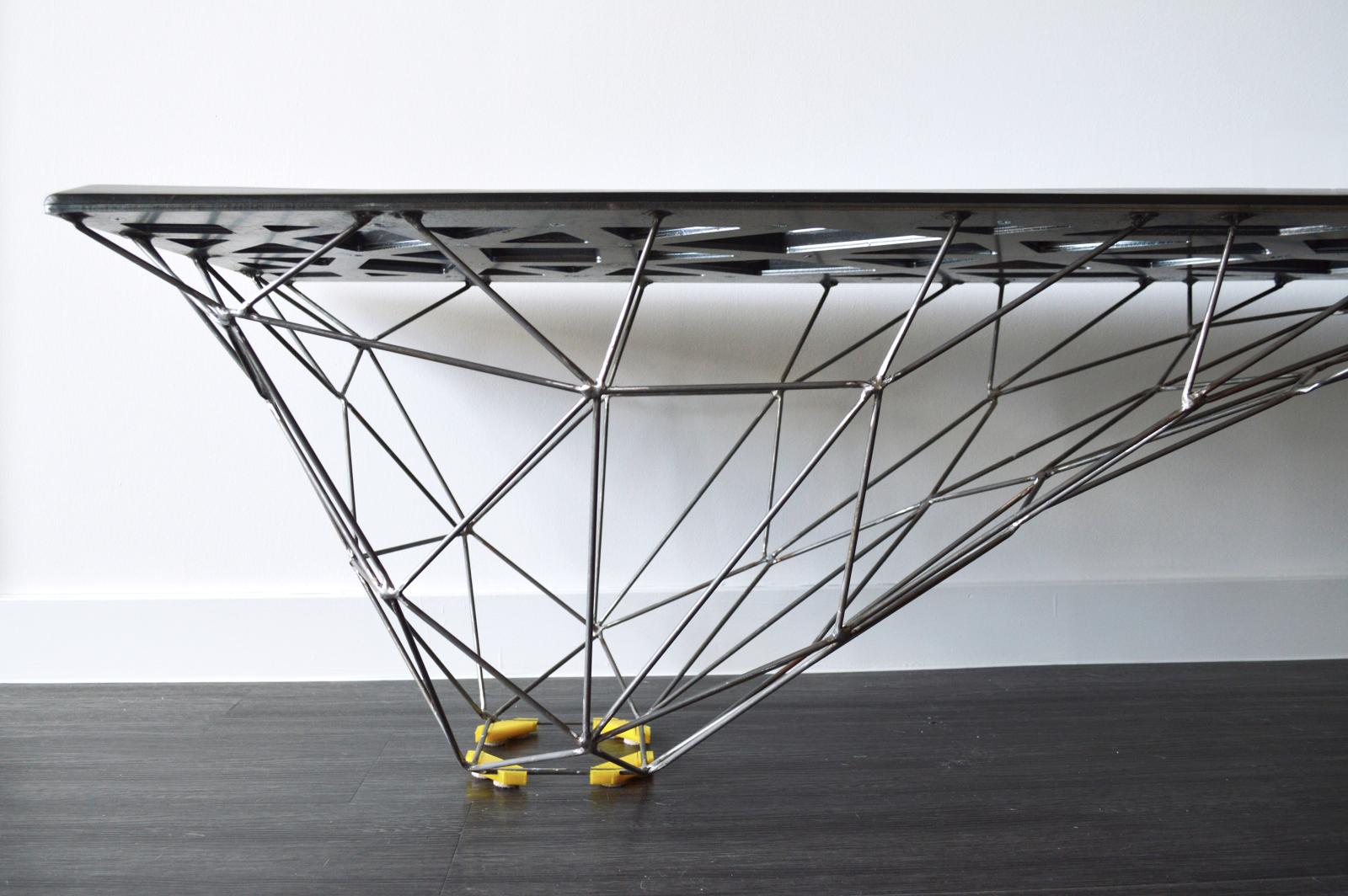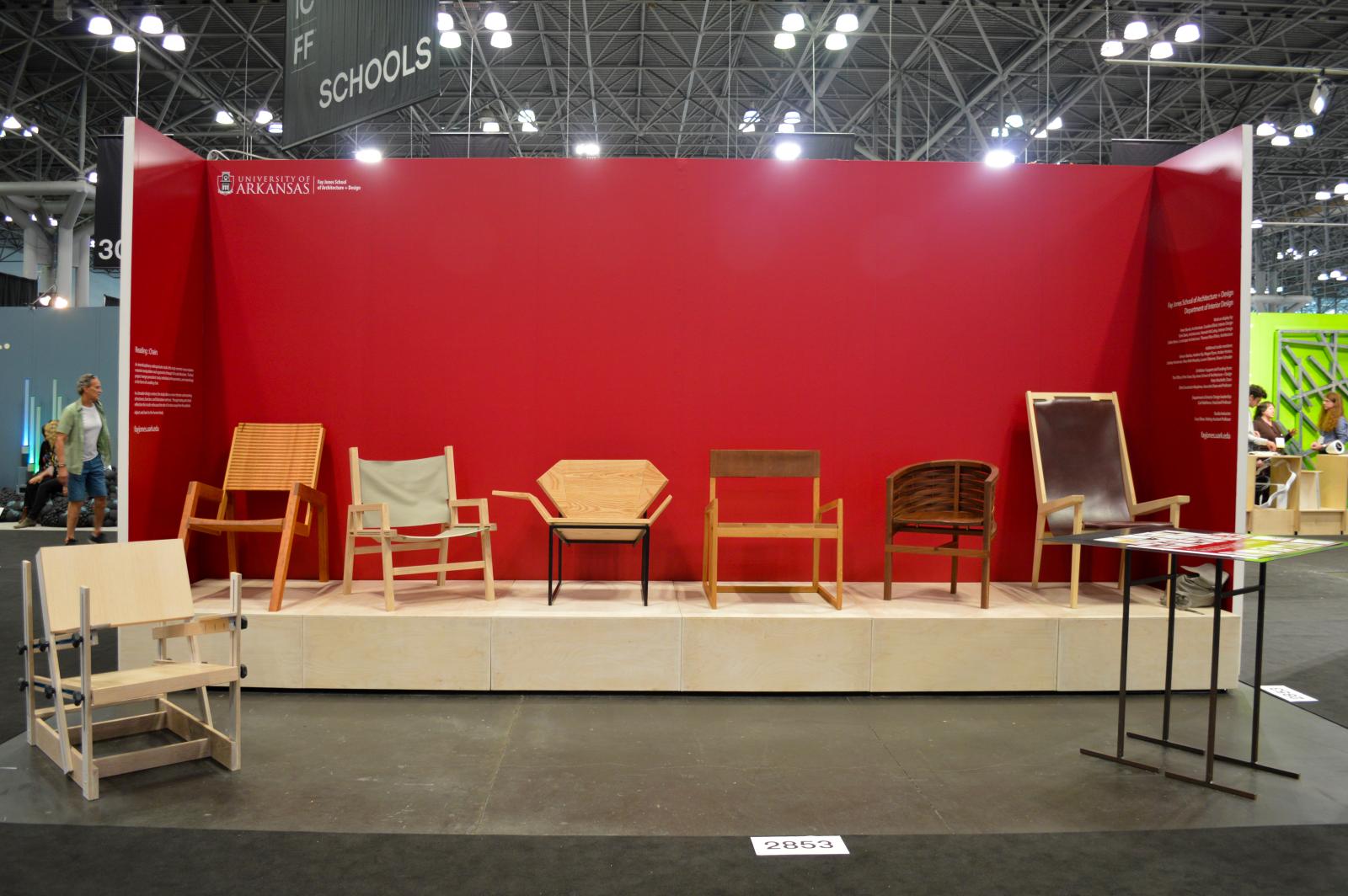Q&A with Cory Olsen

CORY OLSEN
Assistant Professor, University of Oregon
BSID, 2008; MID, 2017
WHAT IS YOUR CURRENT ACADEMIC POSITION AND WHAT DOES IT ENCOMPASS?
I’m a tenure-track Assistant Professor at the University of Oregon in Eugene, College of Design, School or Architecture and Environment, Department of Interior Architecture. I teach both traditional interior studios as well as furniture design studios, plus core lectures and seminars. The SAE (School of Arch/Env) is multidisciplinary, so my courses are a mix of Interior Architecture and Architecture students, at both the undergraduate and the graduate level. As tenure-track faculty member, I also have various departmental service roles including admissions reviews, faculty liaison to the student IIDA chapter, and coordinating work for our upcoming CIDA accreditation.
HOW WOULD YOU DESCRIBE YOUR AREA OF EXPERTISE WITHIN THE FIELD OF INTERIOR DESIGN?
My focus is primarily at the scale of furniture within our environments. As a former cabinetmaker, I very much enjoy operating at the object scale and addressing all of the small details that we interact with both in sight and touch. My research focus centers on integrating CAD/CAM processes in support of traditional modes of making, for example using a CNC router and 3D printer to generate a jig to assist in the shaping of a furniture component.
As an educator, I’m also interested in utilizing our computer modeling and visualization software(s) as modes of formal exploration: as chronological/categorized on-screen digital artifacts, traditional outputs of print and model, and AR/VR elements within our spaces.
HOW DID YOUR STUDIES HERE PREPARE YOU FOR YOUR CAREER AS A DESIGN EDUCATOR?
Having both my undergraduate and graduate degrees from UTSOA, I’ve long valued the educational approach of the school. There is a significant emphasis on the context of design theory paired with creative challenge. While inevitably hard skills such as software learning does occur that was never the focus. I feel the faculty and curriculum at UTSOA built a range of base knowledge and skills that students could implement and tailor as individuals per their individuals strengths and interests. In my own teaching I strive for a similar approach- exposing students to multiple tools and solutions so that they can assess and implement them towards their own ideal outcomes. Less of a conforming to a mold or fixed process and very much a more adaptable sequence with undetermined outcomes.
IS THERE AN ACADEMIC EXPERIENCE AT UT THAT STANDS OUT AS PARTICULARLY INFORMATIVE OR MEMORABLE?
There are many great experiences to choose from! Some of my favorite (grad) coursework included a semester design/build studio with Coleman Coker’s Gulf Coast Design Lab, a speculative interiors studio with Clay Odom, and Mark Macek’s outstanding Wood Design instruction. I was fortunate to TA for Kory Bieg and Marla Smith in the Visual Communication sequence which was invaluable to gain extra exposure to new software emerging since my undergraduate days.
Ultimately I am most grateful to my graduate advisor Igor Siddiqui, who offered an adept balance of encouragement and challenge to help me define my place within design and design education. Even today, getting his approval is one of my top metrics for gauging my work and success.
WHAT ADVICE WOULD YOU OFFER TO EMERGING INTERIOR DESIGNERS INTERESTED IN TEACHING?
I’m someone who ‘accidentally’ came into design education via an unexpected visiting lecturer position at the University of Arkansas, offered by my former UTSOA studio professor Carl Matthews. Since that first year I’ve found teaching, as an interaction with students, to be quite easy as it so naturally builds from student curiosity and excitement. The challenge, I believe, is developing a line of inquiry that will allow engagement in the field of design across a day, week, semester, and (ideally) years of study and development. So to anyone considering academia, it will be important to identify your individual interest(s) – whether that be history, theory, build, criticism, materials, etc. – and map out ways that you can use your classrooms as one of your modes of exploration in addition to individual efforts.
To test the waters of design education I think it is great to get involved in various small ways to start. Reach out and offer to be a reviewer at a school in your community; check on open visiting/adjunct positions and see if you can still maintain your professional practice simultaneously; check in with your local IIDA or ASID chapters to see what events they have going on with their student members. I greatly benefitted from having some adjunct experience before I committed to a tenure-track path, so I would advocate a similar path for others, even if the impermanence is challenging.



